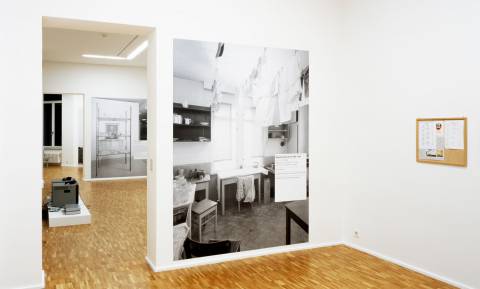The GfZK celebrates a ten-year anniversary in 2008: on 16 May 1998, the villa reconceived by Peter Kulka was opened by Klaus Werner. This event marked the first fulfilment of a long-held dream of the GfZK’s founding director to create a home for contemporary art in East Germany. With the two exhibitions [Collection 98], curated by Klaus Werner, and ONTOM, curated by Jan Winkelmann, a programmatic beginning was created, to bring together various concepts of art, works from East and West and from different generations.
A Benefactors’ Museum for International and Present-Day Art was already being contemplated before the collapse of the German Democratic Republic. During a studio visit to the GDR by the Fine Arts Committee of the Cultural Committee of German Business (Kulturkreis der deutschen Wirtschaft im BDI e.V.), Klaus Werner presented the idea for a Benefactors’ Museum, and in Arend Oetker, the chairman of the Fine Arts Committee, he found a com-rade-in-arms. With the opening of the Zeitzeichen (Signs of theTimes) exhibition in the Museum of Fine Arts in Leipzig on 10 November 1989, the call for the foundation of this benefactors’ museum was made public. The fall of the Berlin Wall then gradually enabled a modified realisation of the first plans. Early in the 1990s, Klaus Werner and Arend Oetker devoted them-selves with great enthusiasm to the political and economic pre-conditions for the Leipzig Gallery Galerie Arkade, an important artistic centre in the GDR period, will also take place in 2008 in collaboration with Herbert Schirmer and the Galerie parterre in Berlin. To mark the occasion of this tribute, a book about Klaus Werner will also be published, edited by the Berlin art historians Barbara Barsch und Gabriele Muschter. The GfZK’s audio guide, Tonführung, will continue to be available for the 2008 collection exhibition. It is produced in collaboration with students of the University of Leipzig, with Lena Seik, Alexandra Kühnert, Heidi Stecker of the GfZK and Weng Holster.




